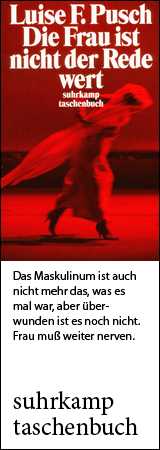Biographies Anna Grigorjewna Dostojewskaja

Wikimedia Commons
(née Snitkina)
born on 12 September 1846 in St. Petersburg
died on June 9, 1918 in Yalta
Russian writer, second wife of Fyodor M. Dostoevsky
175th birthday on September 12, 2021
Biography • Literature & Sources
Biography
Anna Grigorievna Dostoevskaya, née Snitkina, has gone down in literary history not only as the second wife of the Russian writer Fyodor Mikhailovich Dostoevsky (1821-1881); she was also the reliable caretaker of his vast literary oeuvre after his death. She was born in St. Petersburg on September 12, 1846, the daughter of Grigory Ivanovich Snitkin, a Ukrainian official, and his Swedish wife Maria Anna. Here Anna Grigorievna attended the German-language St. Anne's Gymnasium and the city's first girls' grammar school. After that she took some pedagogical courses and trained as a stenographer. This is how she met Dostoevsky at the beginning of October 1866.
However, the first meeting had a prehistory: In the spring of 1864, Dostoevsky was heavily in debt due to the failure of a magazine. He saw no other way out than to incur new debts. This usually took the form of pawning his still unwritten books. In his search for a publisher who would grant him an advance, he came across the former music dealer F. Stellowski. He wrung a promise of 3,000 rubles from him - with the condition: to deliver a new novel of ten printed pages by November 1, 1866 at the latest. In case of non-delivery, the unscrupulous Stellowski was entitled to publish all of (Text from 2021)Dostoevsky's works, including future ones, without paying any fee to the author. A gagging contract. Moreover, Dostoevsky was going through a life crisis at the time; in addition to his brother Mikhail (1820-1864), his first wife Maria Dmitrievna (1824-1864) had also died in April 1864.
Undeterred, however, Dostoyevsky traveled to Germany at the end of July 1865 with Stellovsky's money, where he again gave himself over to his gambling addiction in Wiesbaden. Returning to St. Petersburg at the end of September, he first worked on his novel “Crime and Punishment”, which appeared as a feature novel in the monthly magazine “Russki Westnik”. The deadline for the submission of the required manuscript was approaching. Shortly before the deadline, Dostoevsky hired a stenographer, the young Anna Grigorievna Snitkina, to whom he dictated for several hours every day. She then transcribed the shorthand at home and brought the text with her the following day. Together, they achieved the seemingly impossible: from October 4 to 29, 1866, the novel that would later become so famous, “The Gambler,” was written. At the last minute, Stellovsky tried to outsmart the writer; he had left St. Petersburg at short notice and forbidden his staff to accept the manuscript. But Dostoevsky delivered it to a police officer of the administrative district, in exchange, of course, for an acknowledgement of receipt by an official. The young Snitkina had thus saved Dostoevsky from financial disaster. Perhaps the novel is the only example, or at least one of the few instances in 19th-century world literature, where shorthand played a significant role in the creation of a work of art.
The brief successful collaboration was soon to become an affectionate union. As early as February 15, 1867, the forty-five-year-old Dostoevsky married the twenty-year-old Anna Grigorievna, who was to support him as an equal partner for the rest of his life. Not only did she become the mother of their four children, two of whom died young, but she also played an active role in shaping his literary life as his first listener, critic, and finally as a prudent businesswoman and administrator of his work. Thirty years after Dostoevsky's death, between 1911 and 1916, she wrote her “Vospominaniya” (Engl. “Memoirs”), which first appeared in German in 1976 in a translation by Brigitta Schröder, published by Rütten & Loening. To mark the 200th anniversary of the writer's birth, Aufbau Verlag has reissued this translation, with some historical illustrations, under the title “My Life with Fyodor Dostoyevsky,” based on the unabridged new Russian edition published by Boslen in Moscow in 2015.
Dostoevskaya's memoirs, written at the age of seventy, are based primarily on her “secret” stenographic diaries and notes kept over many decades, as well as her carefully preserved correspondence with her husband. The memoirs and letters of friends and contemporaries were also included. In nine extensive chapters, Dostoevskaya summed up her life. She condensed individual episodes into short stories, such as Dostoevsky's courtship, several stays abroad (e.g. in Dresden, where her daughter Lyuba was born), the description of the death of her first daughter Sonja, and her shock at the death of her husband.
When the end came, my children and I gave free rein to our despair: we cried, sobbed, said something, kissed the face and hands of the still warm dear deceased; all this I remember darkly, clearly I recognized only one thing, that with this moment my personal life, filled with boundless happiness, ended and I was eternally orphaned mentally.
Anna outlived her husband by almost forty years. She died on June 9, 1918 in Yalta (Crimea). During this time she devoted herself entirely to publishing his work. She never remarried, remarking wryly, “Who else could I marry after Dostoevsky? Tolstoy, perhaps?” Just a few weeks after her husband's death, she embarked on the complete edition of his works, which was completed after two years. The last volume, which included a biography and Dostoevsky's letters, appeared in November 1883, and the first complete edition (6000 copies) had already been sold by early 1884. Thus, three more editions appeared until 1890.
Dostoevskaya's detailed memoirs are among the most reliable records about the writer. Another important source is the correspondence between the spouses, which was also published by Aufbau Verlag under the title “ich denke immer nur an dich” (I think only of you) for the Dostoyevsky anniversary in 2021. The correspondence provides not only intimate insights into the artist's marriage but also into the creation of Dostoevsky's works, which he wrote during the 14 years of marriage. His wife had even become involved in the self-publishing of his books and their distribution. Even in his first letter, Dostoevsky struck an amiable, even passionate tone: “You are my whole future - hope and faith and happiness and bliss - everything.” It was to be an equal and kindred partnership, despite the 24-year age difference. However, the letters, which deliberately avoid stylization, also reveal Dostoevsky's jealousy, his addiction to gambling, and his unstable state of health (epileptic seizures).
(Text from 2021)
Translated with www.DeepL.com/Translator (free version)
Author: Manfred Orlick
Literature & Sources
Dostoevsky portrayed by his wife: the diary and reminiscences of Mme. Dostoevsky / edited by Samuel Solomonovisch Koteliansky. Routledge, 2014.
Anna Dostojewskaja: Mein Leben mit Fjodor Dostojewski - Erinnerungen. Aus dem Russischen von Brigitta Schröder, neu durchgesehen, erweitert und aktualisiert von Ganna-Maria Braungardt. Mit 26 Abbildungen. Aufbau Verlag, Berlin 2021.
Anna Dostojewskaja / Fjodor M. Dostojewski: Ich denke immer nur an dich - Eine Liebe in Briefen. Aus dem Russischen von Brigitta Schröder, neu durchgesehen und aktualisiert von Ganna-Maria Braungardt. Aufbau Verlag, Berlin 2021.
If you hold the rights to one or more of the images on this page and object to its/their appearance here, please contact Fembio.



